-
 Bitcoin
Bitcoin $110000
-1.38% -
 Ethereum
Ethereum $4353
-1.95% -
 XRP
XRP $2.834
-1.20% -
 Tether USDt
Tether USDt $1.000
0.02% -
 BNB
BNB $847.1
-1.38% -
 Solana
Solana $206.1
-2.42% -
 USDC
USDC $0.9999
0.02% -
 Dogecoin
Dogecoin $0.2144
-1.54% -
 TRON
TRON $0.3378
-0.74% -
 Cardano
Cardano $0.8127
-2.69% -
 Chainlink
Chainlink $23.06
-2.34% -
 Hyperliquid
Hyperliquid $45.24
-0.77% -
 Ethena USDe
Ethena USDe $1.001
0.03% -
 Sui
Sui $3.285
-2.46% -
 Bitcoin Cash
Bitcoin Cash $588.1
-1.85% -
 Stellar
Stellar $0.3577
-1.93% -
 Avalanche
Avalanche $24.66
-2.52% -
 Hedera
Hedera $0.2129
-3.80% -
 Cronos
Cronos $0.2658
-2.11% -
 UNUS SED LEO
UNUS SED LEO $9.522
0.19% -
 Litecoin
Litecoin $110.6
-1.80% -
 Toncoin
Toncoin $3.122
-1.79% -
 Shiba Inu
Shiba Inu $0.00001212
-2.78% -
 Polkadot
Polkadot $3.770
-2.40% -
 Uniswap
Uniswap $9.346
-2.95% -
 Dai
Dai $0.9999
-0.02% -
 Monero
Monero $269.5
0.04% -
 Aave
Aave $319.6
-1.91% -
 Ethena
Ethena $0.6907
-5.62% -
 Bitget Token
Bitget Token $4.891
-3.49%
What does a failed transaction mean on Etherscan?
A failed Ethereum transaction is permanently recorded on-chain, marked as "Fail" on Etherscan, and incurs a gas fee despite not executing its intended action.
Sep 04, 2025 at 05:55 pm
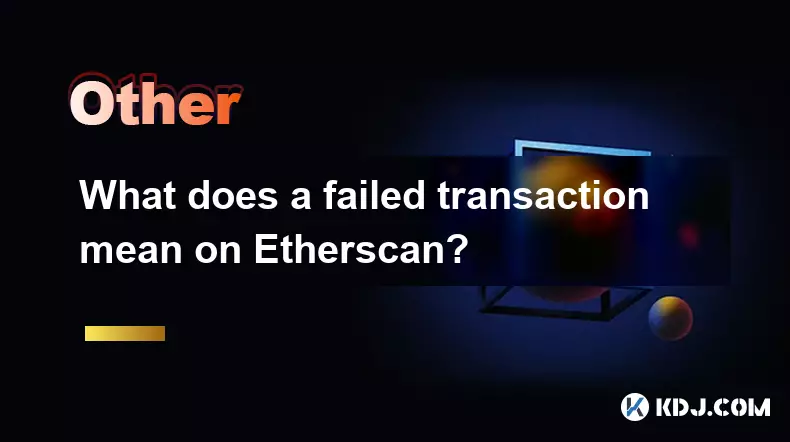
Understanding Failed Transactions on Etherscan
When users interact with the Ethereum blockchain, they often rely on Etherscan to monitor the status of their transactions. A failed transaction on Etherscan indicates that the transaction was broadcast to the network but did not execute as intended. This does not mean the transaction disappeared; it is permanently recorded on the blockchain with a status of 'Failed'. Despite the failure, the sender still incurs a gas fee because computational resources were used to process the attempt.
1. A failed transaction is visibly marked with a red cross or labeled as 'Fail' on Etherscan, making it easy to identify.
- The transaction hash remains valid and searchable, preserving transparency across the network.
- Even though the intended action—such as token transfer or smart contract execution—did not complete, the transaction is still part of the immutable ledger.
- Users can review the transaction details, including the error reason, by clicking into the transaction hash on Etherscan.
- Common labels like 'Transaction Failed' or 'Status: 0x0' indicate execution reverted at the EVM level.
Common Causes of Transaction Failure
Several factors can lead to a transaction failing on the Ethereum network. These range from user-side mistakes to contract-level restrictions. Understanding these causes helps users avoid unnecessary gas expenses and improve interaction accuracy.
1. Insufficient gas limit: If the specified gas limit is too low to cover the computation required, the transaction runs out of gas and fails.
- Slippage tolerance too low: In decentralized exchanges, if the price changes beyond the user’s slippage setting, the trade reverts.
- Smart contract reverts: Contracts may include conditions that, when unmet, trigger a revert using require() or assert() statements.
- Invalid recipient address: Sending to a malformed or non-existent contract function may result in failure.
- Network congestion and low gas price: While this usually causes delays, extremely low fees might result in inclusion in a block with unfavorable conditions, leading to execution failure.
Analyzing Failed Transactions Using Etherscan Data
Etherscan provides detailed insights into every transaction, including those that fail. By examining specific fields, users can pinpoint why an operation did not succeed.
1. Check the 'Status' field: A value of '0x0' means failure, while '0x1' indicates success.
- Review the 'Transaction Action' section: This reveals whether the transaction interacted with a contract, sent ETH, or attempted an approval.
- Examine the 'Error Message' if available: Etherscan sometimes decodes revert reasons, such as 'SafeMath: subtraction overflow'.
- Look at the gas used: A transaction that consumed all the gas provided is likely to have failed due to insufficient limits.
- Inspect the 'Input Data' and 'Logs' sections: These can show function calls and emitted events, helping developers debug contract interactions.
Impact of Failed Transactions on Wallets and DApps
Failed transactions affect both end users and decentralized applications. While the blockchain remains consistent, user experience and trust can be impacted when transactions do not behave as expected.
1. Users lose gas fees even when transactions fail, which can be frustrating, especially with high ETH prices.
- DApps must implement proper error handling to inform users of failure reasons without technical jargon.
- Wallet interfaces like MetaMask now display warnings when a transaction is likely to fail, based on simulation.
- Frequent failures can signal deeper issues in contract logic or frontend configuration.
- Some protocols temporarily lock user funds during transactions; a failure might delay fund recovery if not handled correctly.
How to Prevent Transaction Failures
While not all failures can be avoided, adopting best practices reduces the likelihood of encountering them.
1. Use wallet and DApp interfaces that simulate transactions before broadcasting.
- Increase the gas limit slightly above the estimated amount, especially for complex contract interactions.
- Adjust slippage settings appropriately based on token volatility.
- Verify contract addresses and function parameters before confirming.
- Stay updated on network conditions and adjust gas prices accordingly during peak times.
Frequently Asked Questions
Can a failed transaction be reversed or refunded?No, a failed transaction cannot be reversed. It is permanently recorded on the blockchain. The gas fee is non-refundable because miners or validators still processed the transaction.
Why does a transaction fail even with enough ETH for gas?Having enough ETH to cover gas does not guarantee success. Failures can stem from contract logic, such as a token transfer exceeding balance limits or a function requiring specific conditions that aren’t met.
Does a failed transaction affect my wallet balance?Yes, the wallet balance is reduced by the total gas fee paid (gas used × gas price), even if the transaction fails. The principal amount intended for transfer or contract interaction is not deducted.
Can I reuse the same nonce for a failed transaction?No, once a transaction with a specific nonce is mined—whether successful or failed—the nonce is consumed. The next transaction must use the next sequential nonce value.
Disclaimer:info@kdj.com
The information provided is not trading advice. kdj.com does not assume any responsibility for any investments made based on the information provided in this article. Cryptocurrencies are highly volatile and it is highly recommended that you invest with caution after thorough research!
If you believe that the content used on this website infringes your copyright, please contact us immediately (info@kdj.com) and we will delete it promptly.
- Dogecoin's Key Indicator Flashes Buy Signal Amidst Market Drop: A New York Minute
- 2025-09-04 22:25:15
- Gold, Trump, and the Flight to Safety: What's Driving the Market in 2025?
- 2025-09-04 22:25:15
- BlockchainFX (BFX): The New Exchange Token Rivaling BNB and Hyperliquid?
- 2025-09-04 20:30:11
- Cardano Price, Pi Coin, Remittix Presale: Navigating the Crypto Landscape
- 2025-09-04 21:05:11
- Polygon, Blockchain, and India: A Web3 Powerhouse
- 2025-09-04 20:30:11
- Justin Sun, HTX, and High-Yield Products: A Deep Dive into Crypto's Latest Trends
- 2025-09-04 20:45:12
Related knowledge

How to find the block height of a transaction
Sep 04,2025 at 08:37pm
Understanding Block Height in Blockchain Transactions1. Block height refers to the number of blocks that have been confirmed on the blockchain since i...
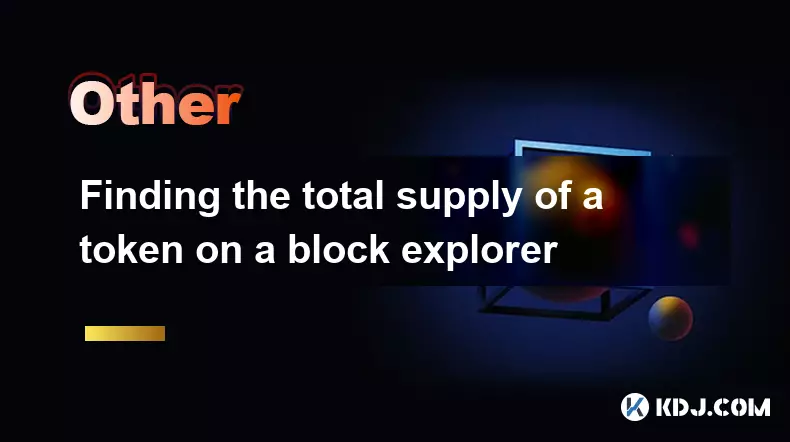
Finding the total supply of a token on a block explorer
Sep 04,2025 at 07:00pm
Finding Token Supply Information on Block Explorers1. Navigate to a blockchain explorer such as Etherscan, BscScan, or Solscan depending on the networ...
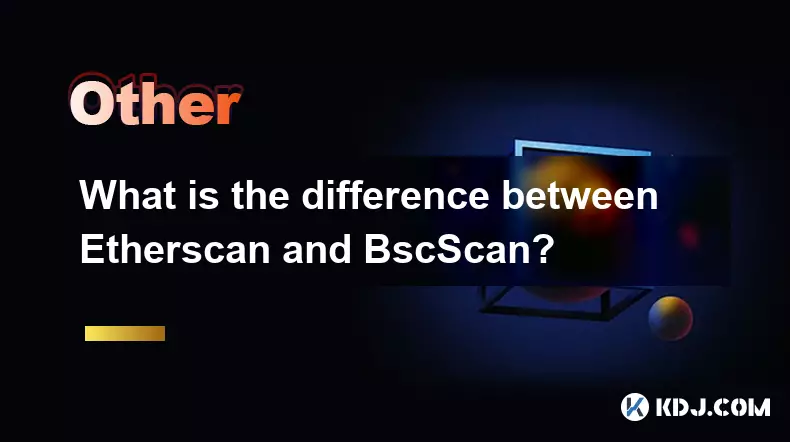
What is the difference between Etherscan and BscScan?
Sep 04,2025 at 07:55pm
Differences in Blockchain Networks1. Etherscan operates exclusively on the Ethereum blockchain, providing transparency and data tracking for all trans...

What does a failed transaction mean on Etherscan?
Sep 04,2025 at 05:55pm
Understanding Failed Transactions on EtherscanWhen users interact with the Ethereum blockchain, they often rely on Etherscan to monitor the status of ...
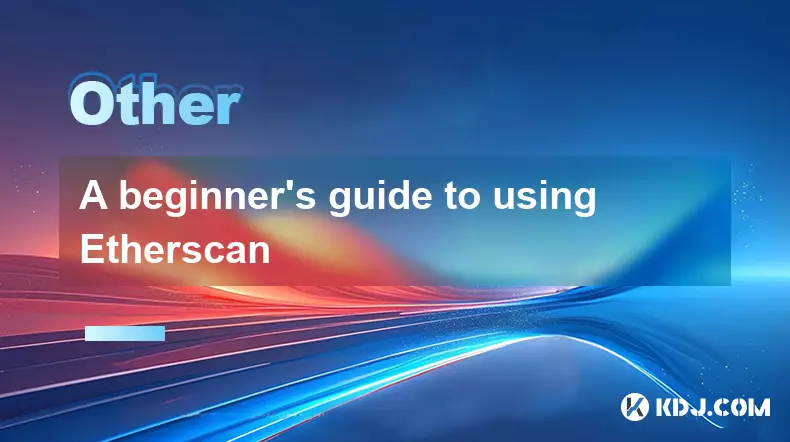
A beginner's guide to using Etherscan
Sep 04,2025 at 07:19pm
What Is Etherscan and Why It Matters1. Etherscan is a blockchain explorer specifically designed for the Ethereum network. It allows users to view real...
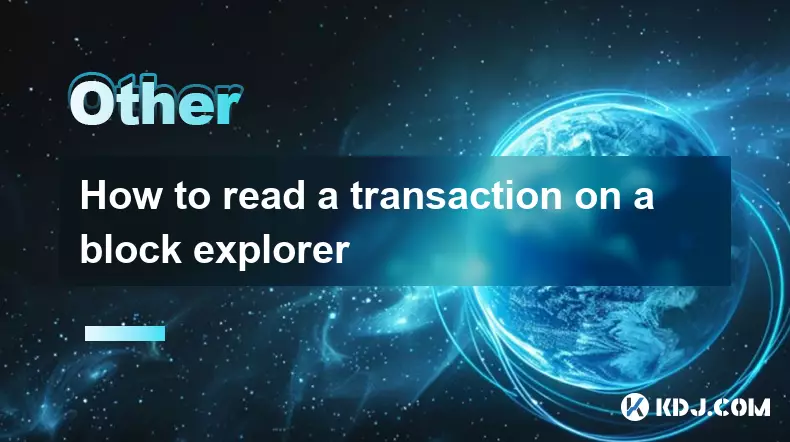
How to read a transaction on a block explorer
Sep 04,2025 at 10:01pm
Understanding the Basics of a Blockchain Transaction1. Every transaction recorded on a blockchain is publicly accessible through a block explorer, a t...

How to find the block height of a transaction
Sep 04,2025 at 08:37pm
Understanding Block Height in Blockchain Transactions1. Block height refers to the number of blocks that have been confirmed on the blockchain since i...

Finding the total supply of a token on a block explorer
Sep 04,2025 at 07:00pm
Finding Token Supply Information on Block Explorers1. Navigate to a blockchain explorer such as Etherscan, BscScan, or Solscan depending on the networ...

What is the difference between Etherscan and BscScan?
Sep 04,2025 at 07:55pm
Differences in Blockchain Networks1. Etherscan operates exclusively on the Ethereum blockchain, providing transparency and data tracking for all trans...

What does a failed transaction mean on Etherscan?
Sep 04,2025 at 05:55pm
Understanding Failed Transactions on EtherscanWhen users interact with the Ethereum blockchain, they often rely on Etherscan to monitor the status of ...

A beginner's guide to using Etherscan
Sep 04,2025 at 07:19pm
What Is Etherscan and Why It Matters1. Etherscan is a blockchain explorer specifically designed for the Ethereum network. It allows users to view real...

How to read a transaction on a block explorer
Sep 04,2025 at 10:01pm
Understanding the Basics of a Blockchain Transaction1. Every transaction recorded on a blockchain is publicly accessible through a block explorer, a t...
See all articles

























































































